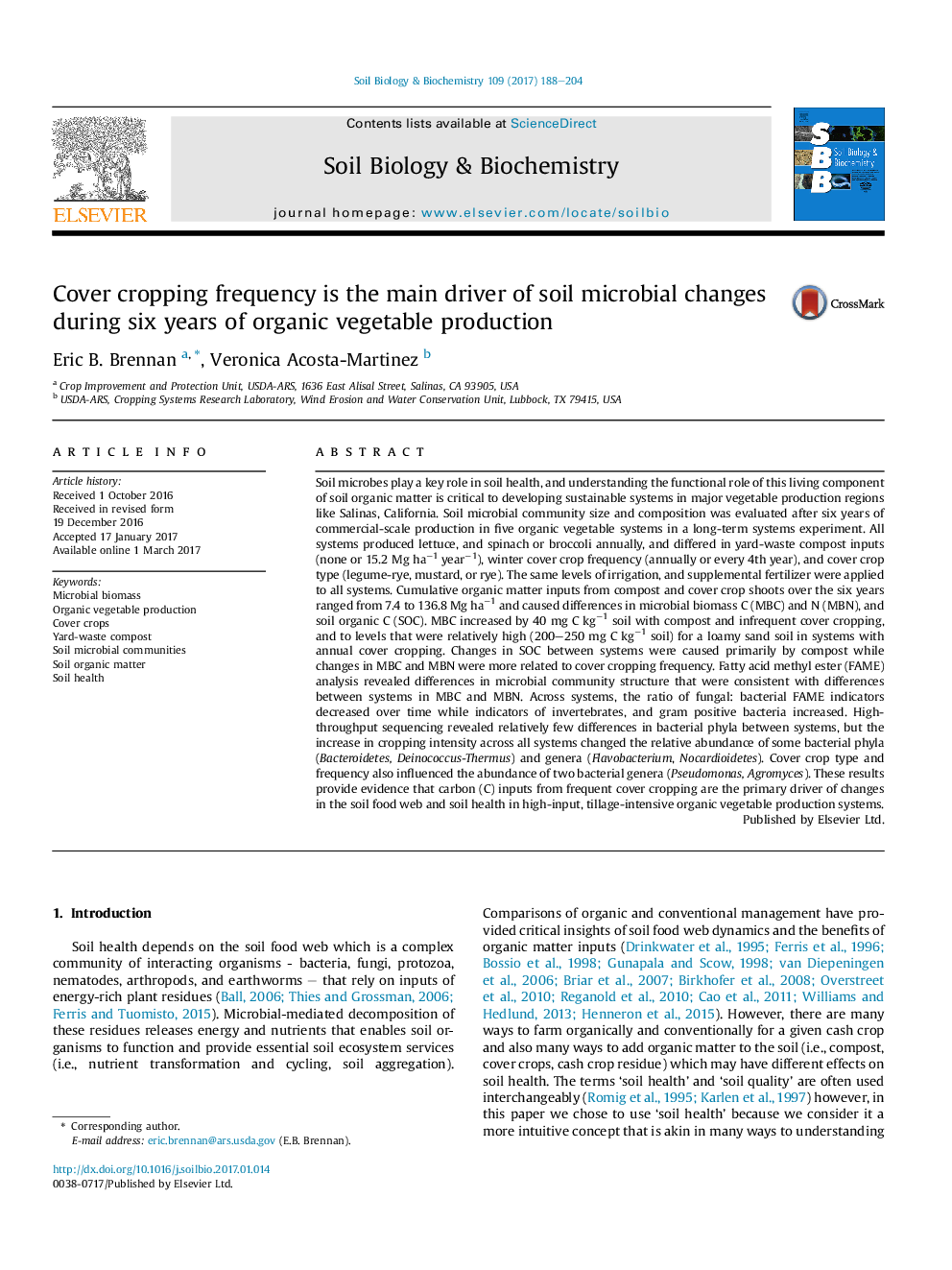| Article ID | Journal | Published Year | Pages | File Type |
|---|---|---|---|---|
| 5516487 | Soil Biology and Biochemistry | 2017 | 17 Pages |
â¢Compost & infrequent cover crops increased microbial biomass by 40 mg C kgâ1 soil.â¢Compost & annual cover crops increased microbial biomass up to 155 mg C kgâ1 soil.â¢Microbial community size & composition were impacted more by cover crops than compost.â¢Intensive vegetable production reduced fungal:bacterial ratios across all systems.â¢PCA plot separated systems based on cover crop frequency and compost additions.
Soil microbes play a key role in soil health, and understanding the functional role of this living component of soil organic matter is critical to developing sustainable systems in major vegetable production regions like Salinas, California. Soil microbial community size and composition was evaluated after six years of commercial-scale production in five organic vegetable systems in a long-term systems experiment. All systems produced lettuce, and spinach or broccoli annually, and differed in yard-waste compost inputs (none or 15.2 Mg haâ1 yearâ1), winter cover crop frequency (annually or every 4th year), and cover crop type (legume-rye, mustard, or rye). The same levels of irrigation, and supplemental fertilizer were applied to all systems. Cumulative organic matter inputs from compost and cover crop shoots over the six years ranged from 7.4 to 136.8 Mg haâ1 and caused differences in microbial biomass C (MBC) and N (MBN), and soil organic C (SOC). MBC increased by 40 mg C kgâ1 soil with compost and infrequent cover cropping, and to levels that were relatively high (200-250 mg C kgâ1 soil) for a loamy sand soil in systems with annual cover cropping. Changes in SOC between systems were caused primarily by compost while changes in MBC and MBN were more related to cover cropping frequency. Fatty acid methyl ester (FAME) analysis revealed differences in microbial community structure that were consistent with differences between systems in MBC and MBN. Across systems, the ratio of fungal: bacterial FAME indicators decreased over time while indicators of invertebrates, and gram positive bacteria increased. High-throughput sequencing revealed relatively few differences in bacterial phyla between systems, but the increase in cropping intensity across all systems changed the relative abundance of some bacterial phyla (Bacteroidetes, Deinococcus-Thermus) and genera (Flavobacterium, Nocardioidetes). Cover crop type and frequency also influenced the abundance of two bacterial genera (Pseudomonas, Agromyces). These results provide evidence that carbon (C) inputs from frequent cover cropping are the primary driver of changes in the soil food web and soil health in high-input, tillage-intensive organic vegetable production systems.
Graphical abstractDownload high-res image (679KB)Download full-size image
